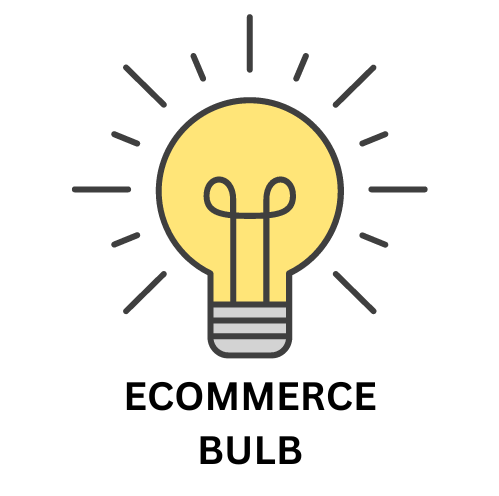Here we are going to discuss Optimizely Heatmaps and some of its examples in a hurry!
Optimizely Heatmaps:
Optimizely Heatmaps provide visual representations of user interactions on a webpage. They help you understand how visitors engage with your content by showing where they click, hover, and scroll.
Types of Heatmaps:
- Click Maps: Indicate where users click on a page.
- Move Maps: Show where users move their mouse cursor.
- Scroll Maps: Reveal how far users scroll on a page.
Benefits of Using Heatmaps:
- Identify high-interest areas: Discover which elements attract the most attention.
- Uncover usability issues: Identify areas of confusion or frustration.
- Inform A/B testing: Use heatmaps to guide experiment creation.
- Improve page layout: Optimize content placement based on user behavior.
How Heatmaps Complement A/B Testing:
- Inform experiment creation: Use heatmaps to identify elements for A/B testing.
- Analyze experiment results: Understand why certain variations performed better.
- Discover new optimization opportunities: Identify areas for improvement beyond the current test.
By combining heatmaps with A/B testing, you can gain a deeper understanding of user behavior and make data-driven decisions to optimize your website.

Does Optimizely Have Heat Mapping? How it Work?

Optimizely does not offer a built-in heatmap feature. However, it seamlessly integrates with popular heatmap tools like Hotjar, Crazy Egg, and Mouseflow.
Why Combine Optimizely and Heatmaps?
By integrating heatmap tools with Optimizely, you can gain a deeper understanding of user behavior and inform your A/B testing strategy more effectively.
- Identify areas for improvement: Heatmaps can highlight areas of your website that are underperforming or confusing users.
- Inform A/B testing: Use heatmaps to determine which elements to test and create variations.
- Analyze experiment results: Combine heatmap data with A/B test results for a comprehensive understanding of user behavior.
Popular Heatmap Tools:
- Hotjar: Offers heatmaps, session recordings, and surveys.
- Crazy Egg: Provides various heatmap types and click analysis.
- Mouseflow: Offers session recordings, heatmaps, and form analytics.
By integrating these tools with Optimizely, you can create a powerful combination for optimizing your website or app.

Optimizely Zone Based Heatmaps:

Optimizely Zone-Based Heatmaps is a feature that leverages the power of Contentsquare to provide deeper insights into user behavior on your website. It allows you to analyze specific areas (zones) of a webpage to understand how users interact with different elements.
How it works:
- Identify Zones: You define specific areas of your webpage as zones (e.g., header, hero image, call-to-action, footer).
- Collect Data: Contentsquare collects data on user interactions within these zones, including clicks, hovers, and scrolls.
- Visualize Data: Optimizely displays heatmaps for each zone, showing user behavior within those specific areas.
- Analyze Performance: Compare zone performance across different page variations or experiments.
Benefits of Zone-Based Heatmaps:
- Deeper insights: Understand user behavior at a granular level.
- Improved experimentation: Identify areas for A/B testing or personalization.
- Enhanced decision making: Make data-driven decisions based on zone-level performance.
- Optimized user experience: Identify and address usability issues within specific zones.
By using Optimizely Zone-Based Heatmaps, you can gain a more comprehensive understanding of how users interact with your website and make data-driven improvements to enhance user experience and drive conversions.

Optimizely Heatmaps Examples:

Optimizely heatmaps can provide valuable insights into user behavior on your website. Here are some examples of how you can use them:
Ecommerce Website
- Identify high-traffic areas: Determine which product categories or product pages are most popular.
- Analyze checkout funnel: Understand where users drop off during the checkout process.
- Optimize product page layout: Identify which product elements (images, descriptions, CTAs) attract the most attention.
Blog or Content Website
- Determine content consumption: See how far users scroll on blog posts.
- Identify popular elements: Understand which content elements (images, headings, CTAs) grab attention.
- Optimize content placement: Determine the best placement for ads or calls-to-action.
Lead Generation Website
- Analyze form completion: Identify which form fields are causing issues.
- Optimize form layout: Determine the best placement for form elements.
- Understand user flow: See how users navigate through the lead generation process.
General Website Examples
- Menu optimization: Analyze how users interact with the navigation menu.
- Pop-up effectiveness: Measure the impact of pop-ups on user behavior.
- Hero image performance: Evaluate the effectiveness of different hero images.
By understanding how users interact with your website through heatmaps, you can make data-driven decisions to improve user experience, increase conversions, and achieve your business goals.

Optimizely Heatmaps Tutorials:

Resources for Learning About Heatmaps and Optimizely
While Optimizely doesn’t provide specific tutorials on heatmaps, you can find valuable information from these sources:
- Heatmap Tool Tutorials: Most heatmap tools offer detailed documentation and tutorials on their websites.
- Optimizely Documentation: Refer to Optimizely’s documentation for information on integrating heatmap tools and using the platform effectively.
- Online Tutorials and Blogs: Search for tutorials and blog posts that combine Optimizely and heatmaps for practical guidance.
- YouTube: Many video tutorials are available on platforms like YouTube demonstrating how to use heatmaps in conjunction with A/B testing tools.
Key considerations when using heatmaps with Optimizely:
- Integration: Ensure seamless data flow between Optimizely and your chosen heatmap tool.
- Data Correlation: Analyze heatmap data alongside Optimizely experiment results for deeper insights.
- Experimentation: Use heatmap findings to inform A/B test hypotheses.
By combining the power of Optimizely and heatmaps, you can gain a comprehensive understanding of user behavior and optimize your website or app effectively.

Can We Get Optimizely Heatmaps for FREE?

To obtain heatmap data, you’ll need to integrate a dedicated heatmap tool like Hotjar, Crazy Egg, or Mouseflow with your Optimizely account.
So, the answer is (No) because Optimizely and dedicated heatmap tools require some cost, and they’re mainly not free.
These third-party tools provide valuable visual representations of user behavior, allowing you to identify areas for improvement and inform your A/B testing strategy.



Leave a Reply